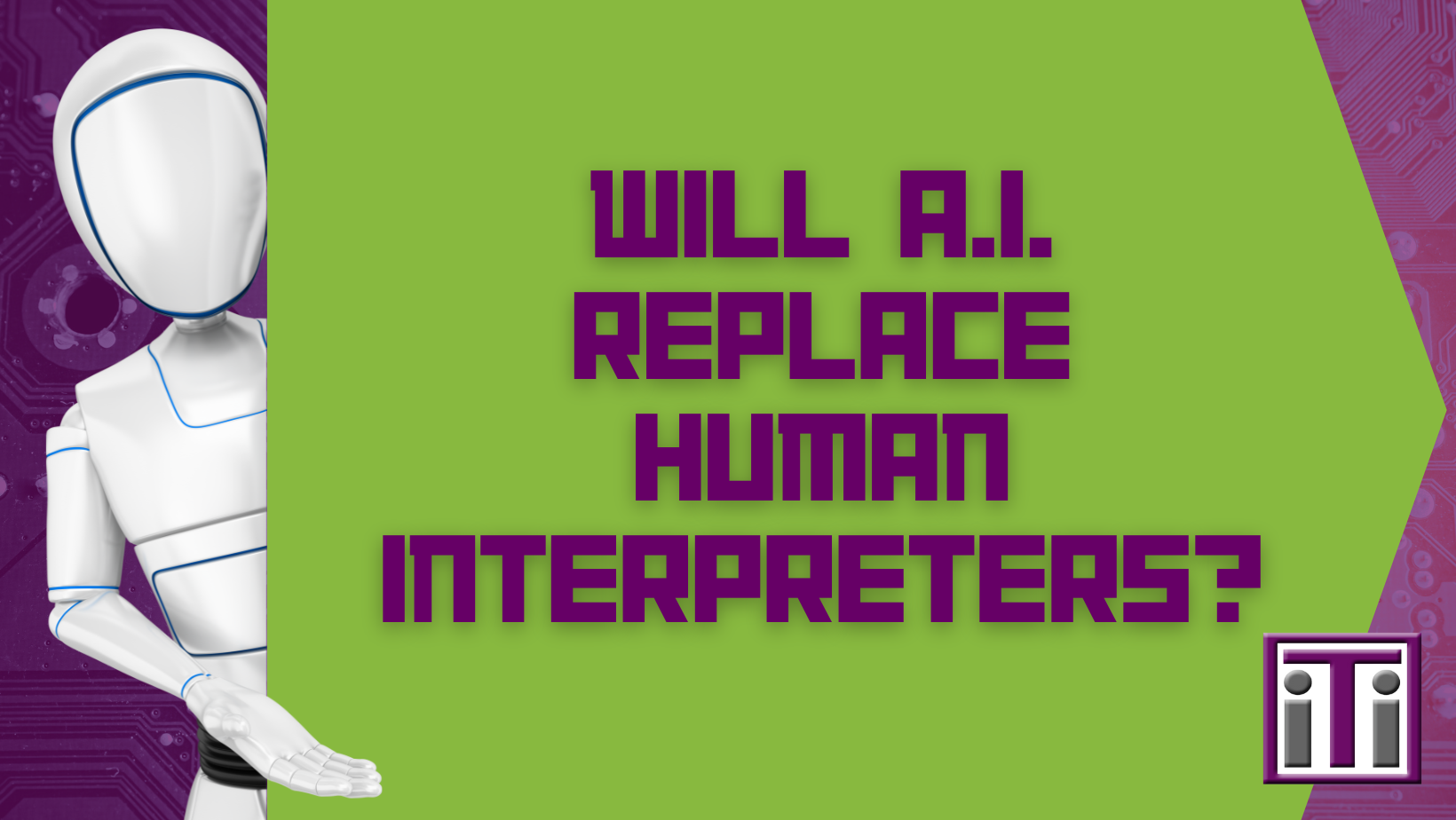We’ve previously written quite a bit about the implications of artificial intelligence for translators, and we’re standing firm by our statement that, while A.I. translation has come a long way, it’s not yet a viable replacement for professional human translation.
Now, let’s talk what A.I. means for the future of interpreting.
The Rise of Artificial Intelligence.
In recent months, “A.I.” has become one of the most searched terms on Google (which is, itself, an A.I. tool). The topic has dominated headlines since ChatGPT was released in November of 2022, and people who have been blithely chatting with Alexa since 2014 are suddenly talking about the rise of artificial intelligence as if the plot of Terminator is about to become a reality.
Is using a computer application for interpreting really a new idea? Let’s break it down.
To interpret, an A.I. interpreting tool needs to be able to do three things:
- Correctly identify the spoken words in the original language.
- Understand what those words mean contextually.
- Convert those words into the target language while maintaining the intended meaning.
Speech recognition is nothing new.
The first item would seem to be the simplest. Machine speech recognition has been around for more than seven decades, and speech-to-text software has been available for mainstream use since Dragon Dictate was first launched for Microsoft Windows in the 1990s. Today, speech recognition is built into every major operating system and has thousands of everyday uses, from your cable remote to the automated phone message at your doctor’s office.
Clearly, A.I.’s ability to accurately identify human speech has greatly improved over the decades. But, in terms of real-time translation, how far has it really come?
 Using purely empirical data, one could logically assume that major networks and cable providers could afford the latest and greatest speech-to-text technology. However, if you watch shows or sporting events with live subtitling, you know that errors are common (and sometimes hilarious).
Using purely empirical data, one could logically assume that major networks and cable providers could afford the latest and greatest speech-to-text technology. However, if you watch shows or sporting events with live subtitling, you know that errors are common (and sometimes hilarious).
For example, during a recent broadcast of a post-coronation event in England, one major network described a distinguished guest’s Burberry hat as a “burglary hat.” There are memes and TikTok videos devoted to errors in subtitling proper names (just ask Benedict Cumberbatch).
How is today’s A.I. different?
The improvement and increased sophistication of Natural Language Processing (NLP) systems is the big difference. Reams have been written on the topic, but the gist is that tools with cutting-edge NLP systems purport to actually understand speech, including contextual meaning, as opposed to just recording the words spoken.
One of the most anticipated speech translation applications is KUDO AI, developed by a company who previously marketed tools to support live interpreters. This, their newest product, is designed to take the live interpreter completely out of the equation.
 KUDO claims the new product’s NLP system allows the tool to understand and interpret speech into “multiple languages with one click” and boasts that it produces the “highest quality translation.”
KUDO claims the new product’s NLP system allows the tool to understand and interpret speech into “multiple languages with one click” and boasts that it produces the “highest quality translation.”
Based on these claims, WIRED magazine chose KUDO AI to test against human interpreters. They used three very different samples, all in Spanish, and asked both the professionally-trained interpreters and the AI tool to convert them to English. The results are fascinating.
A.I. vs live interpreters: How do they compare?
The video at the end of this article shows clips from the WIRED test and discusses the differences. You can watch it yourself to see the full commentary, but here’s our summary of the test results.
In all of the tests the professional interpreters, unsurprisingly, did a great job conveying tone and meaning.
The A.I. tool, not so much.
KUDO AI scores well for “completeness” – not missing any of the words spoken in the original speeches.
In the first test – described as an “emotional” speech – the A.I. tool made poor word choices that had to do with context as opposed to literal translation – “overflow” vs. “overwhelm” and “physics” vs “physical” are examples.
In the second, which WIRED classifies as a “spontaneous” speech, the problem was more mechanical. The speaker often pauses for dramatic effect or to choose the precise word or phrase he wants to use next. KUDO A.I. misunderstood these pauses as the start of a new sentence or thought, and the resulting translations were sometimes nonsensical. It would take an extremely sophisticated A.I. tool to accurately gauge the reason for a pause!
In the third, a written speech read from a teleprompter, the extremely high speed made it more challenging for the human interpreter, while KUDO AI was able to keep up. The translated word choices, however, did not always convey the meaning as intended. An example given was the use of the word “issue” which, in the speech, referred to currencies being issued (distributed) but the translation implied the currencies had issues (problems).
Will A.I. replace live interpreters any time soon?
When evaluating KUDO A.I.’s performance, the interpreters concluded (and we concur) that, while A.I. is a powerful tool that can provide benefits in many ways, it is not a replacement for human interpreters.
Will it ever be? That’s a different question.
If you liked this post also check out “Yes but can AI Localize?”
Interpreters and Translators, Inc. has been providing multicultural language solutions since 1986. Use the link below to tell us about your needs, and a language services expert will be in touch soon. Or, call us directly at 860.968.6777.
| Talk to an Expert |







Comments are closed here.